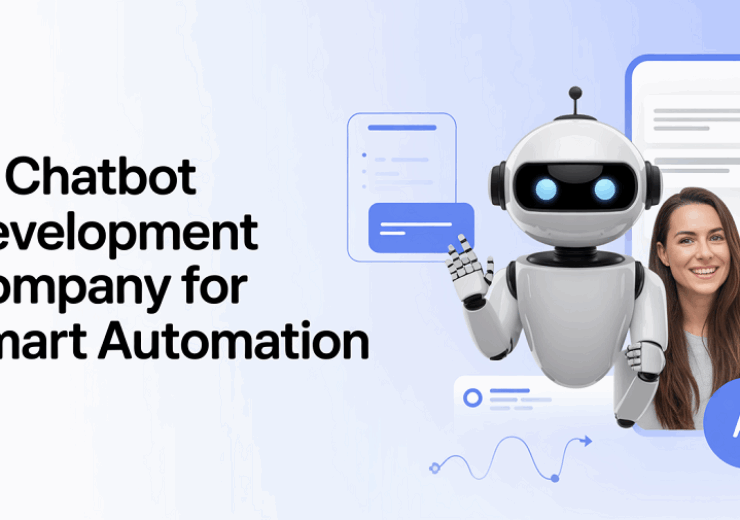Integrating Generative AI into Product Development: A Game Changer

Introduction
Product teams today face relentless pressure. Markets move faster, customer expectations evolve constantly, and every product now blends hardware, software, and connected services. The challenge is not just to build something functional but to create something adaptive that reaches the market ahead of competitors.
Generative AI is changing what that looks like. It is a new class of artificial intelligence that creates rather than predicts. It can generate original text, images, designs, code, or simulations based on patterns it has learned from vast datasets. In practice, it gives design and engineering teams a creative collaborator that can produce options, test ideas, and uncover solutions that were previously out of reach.
Generative AI turns product development from a linear process into a living system where ideas move faster, prototypes appear earlier, and feedback informs design in near real time. Teams that adopt these tools effectively will not just make better products. They will redefine how innovation happens.
This article explores how generative AI integrates across the product development lifecycle, the value it creates, the challenges it introduces, and the steps organizations can take to make it work in practice.
This is not a distant future. It is the next phase of how products are imagined, built, and improved, and it is already underway.
What is Generative AI and Why Now?
—————————-
Generative AI (Gen AI) is a branch of artificial intelligence that creates new content rather than simply analyzing existing data. It can generate text, images, designs, and even software code by learning from large datasets. In product development, this represents a major shift. Traditional design cycles rely on repetitive, manual iteration. Generative AI can produce alternative designs in minutes, allowing teams to evaluate more possibilities early and make decisions based on data instead of assumptions.
Three forces are driving the rise of generative AI in product development:
- Scalable computing and advanced model architectures: Cloud computing and new model designs such as transformers and diffusion models have made it possible to train powerful foundation models. These models allow teams to apply pre-trained intelligence to specific use cases like concept generation and design simulation.
- Mature data infrastructure: Engineering environments now generate and store rich data, from CAD and simulation files to digital twins and sensor feedback. Improved data quality and governance make this information usable, giving AI models the reliable foundation they need to perform effectively.
- The shift toward connected, hybrid products: Products across industries are becoming software-defined and data-connected. Pairing GenAI with digital twins allows engineers to test and refine designs virtually before any prototype is built, creating faster and smarter development cycles.
While adoption is still uneve many organizations are actively experimenting with Gen AI for ideation and early design. The companies that integrate it across their development lifecycles, supported by strong data and governance, will define the next era of product innovation.
How Generative AI is Transforming the Product Development Lifecycle
—————————-
Generative AI is changing how products go from concept to market. What was once a slow, step-by-step process is now a fast, data-driven cycle. AI helps teams imagine, test, and refine ideas at unprecedented speed.
Ideation and Concept Generation
AI makes ideation faster and more creative. Designers can generate hundreds of variations in minutes using simple prompts like “lightweight electric scooter with sustainable materials.” Gen AI can shorten physical product design life cycles significantly, while still relying on expert oversight. Teams explore more ideas, spot better options early, and spend less time starting from scratch.
Design, Engineering, and Prototyping
In engineering, AI-powered generative design works within CAD and CAE systems. Engineers set performance and material goals, and the AI produces optimized designs that are both novel and manufacturable. These outputs often reduce weight and cost without sacrificing performance. Early use of AI helps teams design for sustainability, cutting material waste and energy use. Combined with simulation and digital twins, this approach allows continuous testing and faster refinement before a single prototype is built.
Testing, Validation, and Iteration
AI also speeds up testing by generating scenarios, analyzing results, and spotting weak points early. Companies use it to synthesize customer feedback and pinpoint product issues faster. Human oversight remains essential to validate safety and performance. The best outcomes come when AI explores and humans decide.
Launch and Continuous Improvement
Even after launch, AI keeps products evolving. It can create technical content, analyze sensor and warranty data, and recommend design tweaks for the next version. Gen AI turns product development into an ongoing, intelligent loop, where design, engineering, and feedback flow together to create better products, faster.
Key Value Drivers of Generative AI in Product Development
—————————-
GenAI is changing how product teams work. It helps engineers and designers move faster, make smarter decisions, and turn bold ideas into viable designs. This is continuously expanding what’s possible in product creation.
Speed
GenAI removes the lag between idea and prototype. It can explore and simulate design options in minutes, where teams once needed days or weeks. Faster iteration means quicker reactions to customer feedback, market shifts, or supply constraints. In short, it keeps innovation in motion.
Innovation at Scale
AI opens up the creative space. Instead of sketching five ideas, teams can test hundreds and instantly see how each performs. This breadth often reveals solutions that human teams might never consider. It turns brainstorming into a data-driven experiment, where creativity and computation work side by side.
Cost Efficiency
Virtual testing powered by AI cuts down on costly prototypes and late-stage rework. Problems surface early, when they are still cheap to fix. The result is a leaner R&D cycle, better use of materials, and more value from every dollar spent.
Sustainability
GenAI helps teams design with sustainability in mind from the start. It can suggest lighter materials, circular design strategies, and ways to reduce waste. The same optimizations that shrink environmental impact also tend to improve performance and lower cost, proving that green design can be good business.
Competitive Advantage
AI is also becoming a strategic tool. Product leaders use it to analyze customer trends, predict preferences, and feed those insights directly into design. Each cycle makes the system smarter, creating a continuous loop where products evolve in sync with the market.
Challenges and Barriers
—————————-
Generative AI can unlock major innovation, but scaling it across real product workflows is complex. The toughest challenges involve people, data, and systems working together effectively.
Data Quality and Governance: AI depends on clean, connected data from CAD, PLM, sensors, and customer feedback. Without solid data foundations, even advanced models fail to deliver consistent or trustworthy results.
Culture and Skills: Engineers may hesitate to trust AI-generated designs. Success requires a mindset that treats AI as a creative partner. Teams need hybrid expertise that combines product engineering with AI fluency to translate ideas into practical outcomes.
Integration and Complexity: Generative AI only adds value when it links smoothly with existing CAD, PLM, and supply chain systems. That demands APIs, shared data models, and cross-functional collaboration.
Ethics and Accountability: AI-driven design introduces new concerns around bias, authorship, and compliance. Strong governance ensures safety, intellectual property protection, and transparency.
Proving Value: Many pilots stall without clear results. Tracking metrics such as time-to-market, cost reduction, and sustainability improvements builds trust and supports scaling.
Generative AI succeeds when data, culture, skills, and governance evolve together to turn potential into performance.
How to Implement Generative AI in Product Development
—————————-
Implementing generative AI in product development is not about inserting another tool into the workflow. It is about creating an adaptive system where design intelligence, data, and computation reinforce each other across the product lifecycle. The idea is to create a living ecosystem where every product is part of an ongoing dialogue between human imagination and machine intelligence.
1. Identify high-impact opportunities
Start with areas where AI can create tangible value. Early ideation, design exploration, and virtual testing often deliver the fastest returns because they benefit from AI’s ability to generate and evaluate large sets of options. Begin with one contained pilot to validate outcomes and gather feedback before expanding.
2. Build a strong data foundation
Generative AI depends on accurate, connected data. Consolidate CAD models, simulation results, sensor inputs, and customer insights within a unified data environment such as PLM or digital twin systems. Ensure governance and traceability so models can access reliable design context and maintain transparency in how results are generated.
3. Keep humans in the loop
AI can generate ideas, but only engineers and designers can interpret feasibility, safety, and real-world performance. Encourage a collaborative workflow where humans define constraints and the AI explores the design space within them. This approach strengthens creativity while maintaining engineering discipline.
4. Integrate with existing workflows
Embed AI outputs directly into the tools teams already use. Connecting models with CAD, CAE, and PLM environments allows generative designs to flow naturally into simulation, validation, and production planning. APIs, model management, and version control systems keep data consistent across stages.
5. Measure and refine
Track concrete metrics such as time-to-market, cost per prototype, material efficiency, and iteration speed. These indicators help quantify progress, identify new opportunities, and maintain executive alignment as adoption scales.
6. Evolve the capability continuously
Generative AI implementation is a living process. As new designs, materials, and data sources emerge, models must be retrained and workflows refined. Continuous improvement keeps AI relevant and ensures that the organization grows its innovation capacity over time.
Generative AI succeeds when technology, data, and human insight operate as one system. The organizations that achieve this integration will design faster, test smarter, and define the next standard for intelligent product development.
Conclusion
Generative AI has matured from an experiment into a central force connecting imagination and engineering. It is redefining how products are designed, tested, and improved. The next wave will see deeper integration with digital twins and real-time simulation, creating intelligent systems that learn, adapt, and refine continuously.
When linked with digital twins, AI can analyze performance data, propose optimized designs, and validate them virtually before production. It can also accelerate materials discovery, identifying lighter and more sustainable options that balance cost, durability, and environmental goals. This fusion of AI-driven design and materials science proves that innovation and sustainability can advance together.
To capture this potential, organizations must evolve. Successful teams treat AI as a creative partner, combining human intuition with machine precision. The leaders already building data ecosystems and continuously improving their models are creating self-reinforcing innovation engines. Laggards risk slower cycles, higher costs, and declining competitiveness. Just as CAD became essential decades ago, generative AI is now a core capability for modern engineering.
The future will not replace human creativity. It will amplify it. The organizations that integrate GenAI with strong data foundations, ethical governance, and skilled teams will define the next era of innovation.



